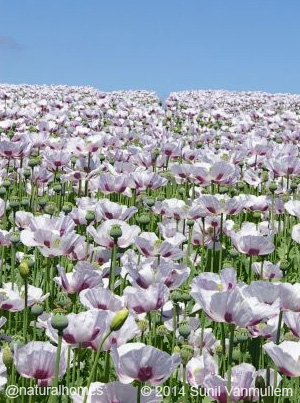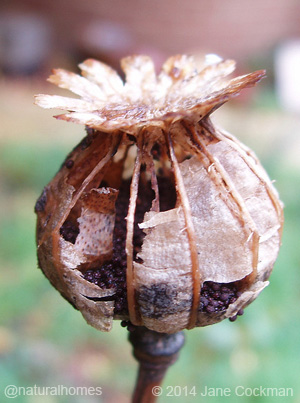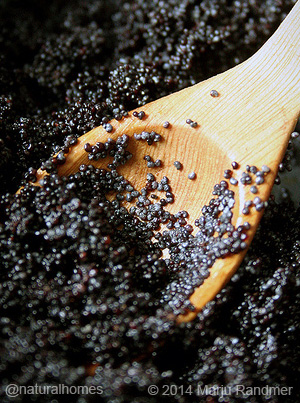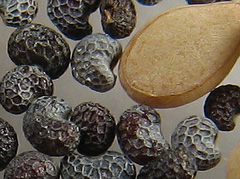 |
|
The shape of the poppy seed head (right) is used
in northern Russian architecture to describe the bulbous dome
shaped church roofs (below).
| |
|
Church on Kizhi Island, Russia |
 |
|
|
| |
 |
|
The opium poppy seed is an important crop both for its seeds and
its oil, about 40% of the seed. It is the only species in the
poppy family that is grown on a large scale as a crop.
|
|
 |
|
 |
|
The poppy seed is very rich in
Calcium, about 12 times more per gram than milk. It is also high
in Phosphorus, Zinc and Manganese.
Poppy seeds are so tiny (see below) that you need
a special poppy seed grinder to release the oil to make a paste
although you can use a mortise and pestle.
| |
|
Poppy with larger sesame seeds |
 |
|
|
| |
 |
|
|
|
| |
Poppy Seeds
v Milk Generally in Europe and
the USA the price per RDA of Calcium (800mg) is about the same
for poppy seeds as for milk but poppy seeds contain many more
essential minerals per 100g than milk with:
12 x Calcium, Ca
195 x Iron, Fe
26 x Magnesium, Mg
9 x Phosphorus, P
5 x Potassium, K
20 x Zinc, Zn
160 x Copper, Cu
1700 x Manganese, Mn
6 x Selenium, Se Data from the
United States Department of Agriculture |
|
|
|